“Arbeit Macht Frei” – Nazi German motto, taken from Lorenz Diefenbach.
Before I get down to the business of writing about my tour to Auschwitz, it’s important to note that some people, including followers of my blog do not agree with visits to places this sensitive. While I understand the nature and the horrific aspect of backpacking my way to places like Auschwitz, I also justify my personal reasons. The horrors of the past bring us to the present, at ease with the current status of the world and preparing for a peaceful future. While war still dominates news headlines in 2015, past atrocities should never ever ever be forgotten. I will do this report in two parts as there were two clear elements to the tour. First of all we headed to Auschwitz I – the notorious and infamous one and then we toured Auschwitz II, known as the Birkenau Camp.
What happened here at Auschwitz is one of the most horrific, horrendous and mentally disturbing series of events of all time. It was manipulated organised obscenly-masterminded torture and mass murder of innocent people. It’s shocking beyond belief. But I want to understand the reasons why, and since I travel so much, I want to make personal visits to these horrific locations to provide myself with some kind of understanding of what has gone wrong, why do some people want to kill. By visiting these places, I feel I always have a better understanding of the matters at hand and I also feel it’s part of life’s experiences.
A journey on this planet is not all champagne and skittles. We’re fooling ourselves to believe we should sit on a beach all day and drink cocktails. Life is like that for some of us because many countries and many people now have freedom to do that. Freedom today, came at a price for our yesterdays. People perished for years and over time it has managed to provide us with a life we can cherish in today’s world. Your visit to Auschwitz will be a fusion of odd emotions and reactions. It’s morbid, scary, moving, horrific, melancholic, obscure, extreme, life-changing and a whole lot more. This ain’t no “backpacking top 6 sights”, don’t be ridiculous. Go in with a clear head and remember what happened here. Innocent people were killed off in all sorts of ways here. Slow deaths, gas chambers, execution in front of peers, hangings etc. Pure evil at work from Nazis, from Germans.
“A funeral march for agony’s last edge” – Richey James Edwards
It wasn’t a completely new experience for me to tour such a brutal site. In the past I have visited some horrific places with brutal histories, and some sad places in general such as:
– Amna Suraka, Iraq (Iraq’s first museum and Saddam Hussein’s House of Horrors)
– The Armenian Genocide Centre in Yerevan
– The Killing Fields, Cambodia
– Tuol Sleng Genocide Museum, Phnom Penh, Cambodia
– The two sides of puzzling Hebron in Palestine
– Buildings of bombings in Northern Ireland
– The ruins of Agdam in Nagorno Karabakh
– Chernobyl and the towns of Pripyat and Kopachi
– Port Arthur, Tasmania (location of the Isle of the Dead and the Mass Murder of 1996)
– Taliban football stadium in Masar e Sharif, Afghanistan
Auschwitz was a long awaited one and after backpacking in Poznan, it was finally time to visit this place.
Introduction: What is Auschwitz?
In short, it’s a concentration camp. But you knew that. It’s a death camp. It’s a place where Nazis controlled innocent people with one thing in mind: killing them with no apparent reason or remorse. Even the name “concentration camp” sounds like a glorified cover up for mass murder. Concentrating on one thing – brutal death of people that the Nazi party wanted rid of in their lunatic quest to somehow make Germany rule the world.
Auschwitz by name appears to be made up of three main “camps” and a few smaller ones: Auschwitz I, Auschwitz II – Birkenau, Auschwitz III – Monowitz. On this tour, I visited Auschwitz I and Auschwitz II – Birkenau. All over the world, Auschwitz has become a symbol of terror, genocide, and the Holocaust. It was established by Germans in 1940, in the suburbs of Oswiecim, a Polish city that was annexed to the Third Reich by the Nazis. Its name was changed to Auschwitz, which also became the name of Konzentrationslager Auschwitz. Oswiecim is a Polish city currently housing 40,000 people. Many people who tour Auschwitz decide to stay in Oswiecim, but I didn’t want to do that. I wanted to simply go here on a day trip from Krakow and back there. Similar to my recent tour of Chernobyl where I was in and out of Kiev in a day.
The Nazis created and built Auschwitz. The direct reason for the establishment of the camp at Auschwitz was the fact that mass arrests of Poles were increasing beyond the capacity of existing “local” prisons. Initially, Auschwitz was to be one more concentration camp of the type that the Nazis had been setting up since the early 1930s. It functioned in this role throughout its existence, even when, beginning in 1942, it also became the largest of the death camps.
The first extermination of prisoners at Auschwitz took place in September 1941, and Auschwitz II–Birkenau went on to become a major site of the Nazi codewords “Final solution to the Jewish question”, in other words a euphemism for mass genocide of Jewish people.
Booking Your Tour to Auschwitz
I booked my tour through the excellent Mosquito Hostel in Krakow, from this page you can see their tour details. The tours are almost every day but you must book them in advance. You don’t need to submit passport details to visit, you just need to pay up front. The hostels in and around Krakow submit their customers to join a mini-bus tour. When you join the mini-bus you will be in with other tourists from other hotels and hostels. The company that runs the tour is called mcit and that appears on your ticket.
Driving there is an option of course, but you must pay for a guided tour of the complex. Besides, personally, it’s not the sort of place I wanted to drive to and back from. It doesn’t feel right to me. Make the correct choice and do it as a tour from the hostel.
The Journey to Auschwitz
I must admit that I enjoyed a night out with the Mosquito Hostel crew the night before I was heading to Auschwitz. This was because I was meeting Ania on the Friday night (night after my Auschwitz tour) and had only pencilled in two nights in Krakow, so I didn’t get back to my dorm to sleep until 2 am.
The next morning, I awoke at 8 am (or the same day, 6 hours later) and had my breakfast at the hostel. I joined up with two others from my hostel at 8.55 am we were told the bus would be here soon and it was. We would be heading to Auschwitz in a black mini-bus. It was full. Ages and nationalities varied from Canada to USA to Norway.
Arrival at Auschwitz
About an hour and a half into the journey, we arrive at the location of Auschwitz.
We already had tickets issued by the hostel and we are part of a guided tour here, we are given a visitor tag on arrival and we should hang this round our necks for the duration of the tour.
However, a strange thing happened to me on arrival here Auschwitz and I wasn’t sure whether to include it here or not. But this is my journey, and perhaps if I leave these stories for the long awaited book it would make sense, so I’ll do just that. Without further ado, we were ushered through security. No backpacks permitted inside, apart from my clothing, I only took my wallet, phone, camera and a bottle of water into the “complex”. That was all. Within a matter of minutes, it was clear to me where we were. I had seen these gates all too many times before in photos and even my brother Danny, who is 14 years younger than me, had been here, a good few years back too.
The Gates of Auschwitz I: Arbeit Macht Frei
It’s all a big lie isn’t it. Work brings freedom. Train and truck loads of Jews, Poles and Gypsies were brought here. They were brought here to be killed. Whether instant death in gas chambers, or slow death after working, this is a death camp.
The notorious gates are gaping down on me and a bird flies over them. This came as a slight surprise of course, as the Manic Street Preachers after visiting death camps around the world, noted that there are no birds at Auschwitz. Now there are, times have changed. But the birds must still have an idea. Something terribly wrong happened here.
It was one of those tours where you will be surprised not to see photos of me here. You are warned of no selfies or photos of each other on the way in. You’re not allowed to take them. It’s not like that here. It’s no backpacking top 6 like I said. No need to smile here. It seemed odd that for once, I just wanted to take photos of what I saw, make some videos and not have photos of myself. I gather if someone wants to copy my photos or believe I was really there, then they can watch the videos. So I appear in none of the photos beyond the gates. (Yes, the photo I included above is at the memorial outside the complex).
The Tour of Auschwitz I
Once inside the gates of hell, the tour commences in earnest. We have a group of around 20 of us. We had been given head sets and headphones and we hang them around our neck, tune into frequency channel 9 and off we go. Our tour guide is thorough throughout the tour. He answers as many questions as he gets. As a man of quotes I also take in the many and various quotes around the complex in the rooms now transformed into museums.
“Those who forget the past are condemned to repeat it” – George Santayana
Some parts of Auschwitz demand no photos at all, some ban flash photography. Be aware of all this. I didn’t photograph a room which was full of tonnes and tonnes of genuine human hair. The Nazis cut off the hair of every male and female prisoner.
The extent of what happened here was predicted by myself in advance, but being here and seeing the rooms, seeing the photos, reading the information boards, listening to the tour guide. It reinforces the horror. Auschwitz was the biggest death camp, used over a 5 year period where approximately 1.1 million its estimated were murdered. Those that survived, their lives could never be the same again. It is estimated that 90% of the victims were Jewish.
So “prisoners” (i.e. innocent people like you and I) from all over Europe were captured, whacked onto trains destined for places like Auschwitz and Dachau. They were duped, told to bring a suitcase of their possessions that they would be given on arrival at so called work camps. On arrival, all their possessions were taken off them and put aside. They’d never see their happy lives again, nor their possessions, nor their families. They were either worked to death or executed in cold blood or in gas chambers.
And the “selection process”? It is as gory as it sounds. The strong ones were kept to be used as slaves and to work and basically worked to a slow death, starved and punished to the end. Women prevented from reproducing, children smashed against walls, some males had their dicks removed. Everything horrific that you didn’t want to hear. With echoes of my trip to the Killing Fields and Tuol Sleng in Cambodia. Yeah, all that shit happened here too.
Everything of any value owned by Jews or “prisoners” was taken off them and the Nazis aimed to use it all to become rich, to become powerful. In one building in the museum, we see separate rooms each with thousands of possessions:
– scissors, knives, shoes, human hair, gold teeth, suitcases, spoons
Once all their stuff had been taken and the “prisoners” had been selected, it was time to wear uniform and go to their cells. Here they were worked and starved to death. If any of them stepped out of line, it was certain death, torture, hanging, and an ominous “death wall” was set up. Code names like the quarters in the camp being called “Canada”, “Mexico” etc. were used and the Nazis also tried to cover up any writings about what was going on. “Final solution” of course meant mass murder.
There was a building at the end of the “main street” in Auschwitz and this housed the death cells. This reminded me of my Hua Lo Prison visit in Hanoi, Vietnam. We visited blocks 4, 5, 6, 7 and 11 on our tour. Tours may vary. Each block is a building, basically like the one below. They all looked the same.
There are lots of maps and plans of Auschwitz available online and at the shop in Auschwitz I. Some conflict with each other, but the one below courtesy of iSurvived.org seems to represent it to an easy to understand level.
For those who didn’t make the selection they were separated into women and children and men and led towards the gas chambers. Of course, none of them knew that. They were all stripped naked and then told they were being given a bath for disinfection. Then they were killed in mass murder in the gas chambers. Most of the gas chambers were at Auschwitz II – Birkenau camp (and that will be in my second part of the trip report), but we went inside one of the gas chambers here in Auschwitz I as well.
The tour was lengthy and detailed and there was a lot to take in. We also saw the gallows for hanging, a “hospital” and the prison rooms. Amongst many other things.
There was even time for an argument here in such a solemn, sad place. At one point an ill-educated young English traveller in our group tried to embarrass me by telling me off for taking a photo of one of the rooms. At this point, I directed her to the following sign which specifies no flash photos only and that other photos are fine. She upset me that girl, a young inexperienced traveller, our tour guide alerted her that she was in the wrong. I didn’t smile once on the entire tour and this girl didn’t help things.
On the entire tour, the most disturbing thing I read was this board, so obvious of course for those who have studied the Second World War.
So the tour was a lot to take in and of course very sensitive and informative. I totally recommend everyone that ever visits the south of Poland (Katowice, Krakow etc.) to try and organise a trip to Auschwitz. It is truly one of the most horrific crimes in the history of the world and to see it with your own eyes is worth doing.
Commercial Auschwitz I
There are shops and a restaurant/cafe at the entrance. I must admit for once, it did feel odd to me that we could eat here and I kind of turned my nose up at two English ladies who were eating and holding the bus up.
Leaving Auschwitz I
The tour had lasted over two hours and was very insightful. I chose to buy no souvenirs, no food or drink and went straight back to the bus after looking in the souvenir shop. After a while, everyone was back on board the mini-bus and we headed to the next and final stop of the two part tour – to Auschwitz II – Birkenau Camp.
Here are some videos from my time touring Auschwitz I:
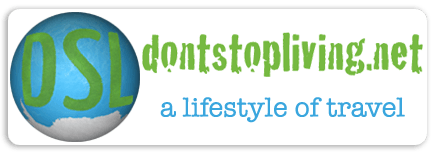

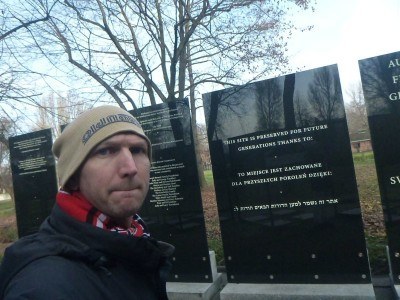
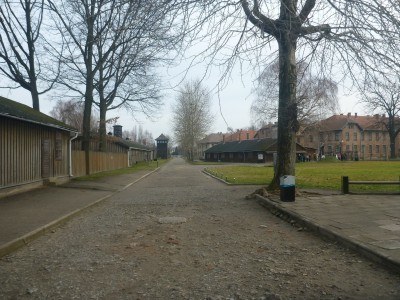
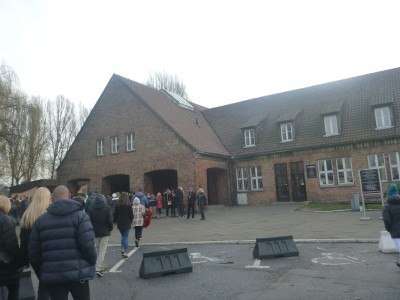
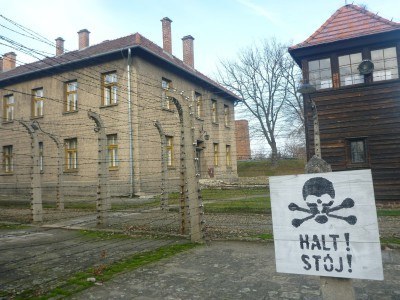
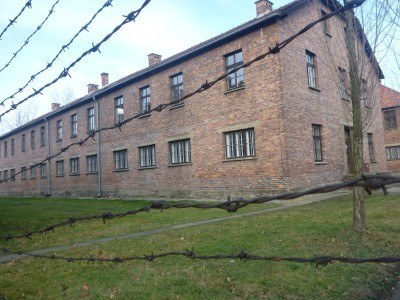


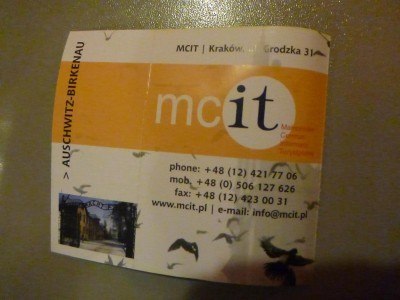
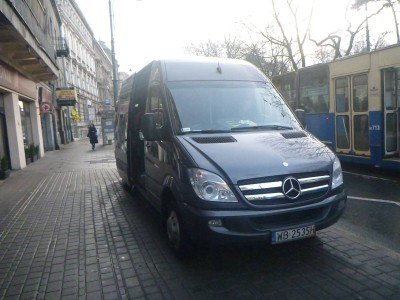
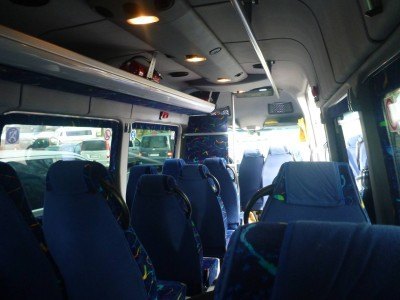
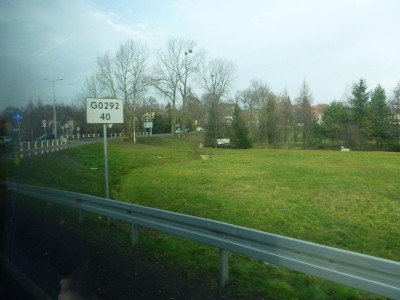
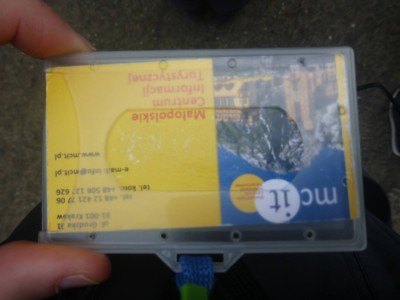
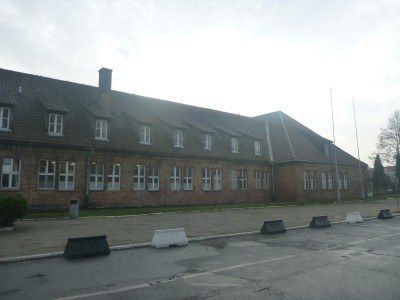

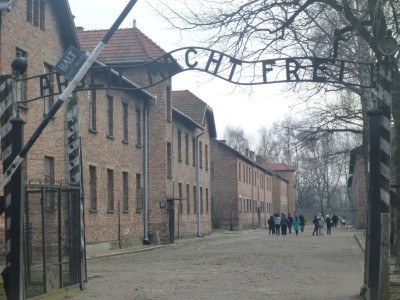
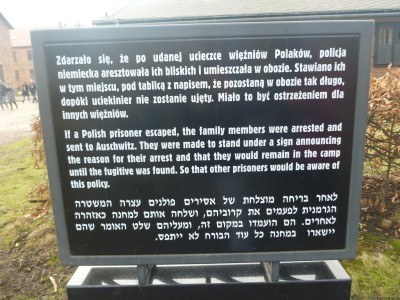
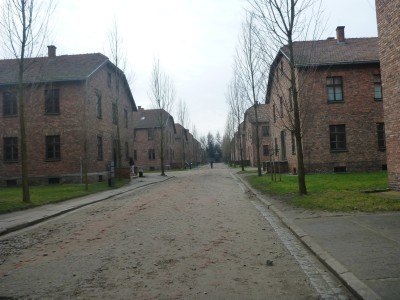
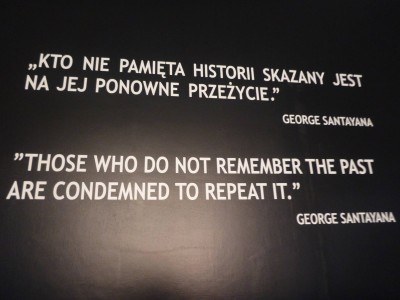
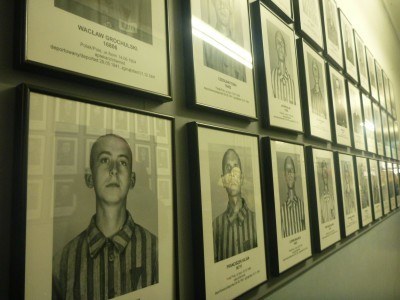
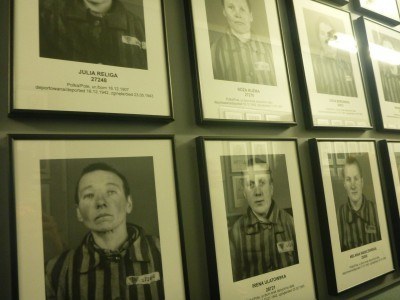
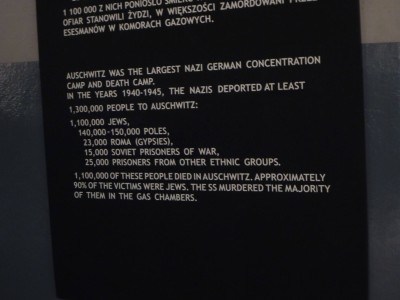

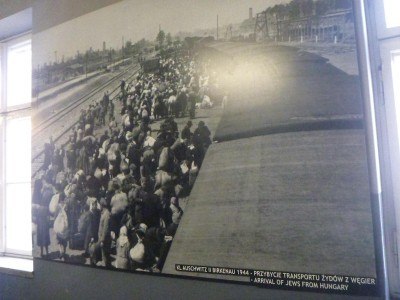
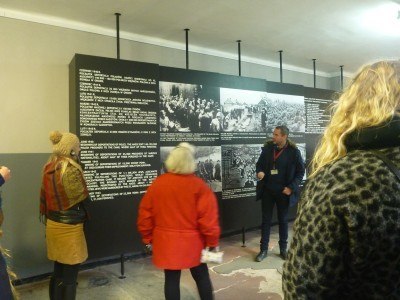
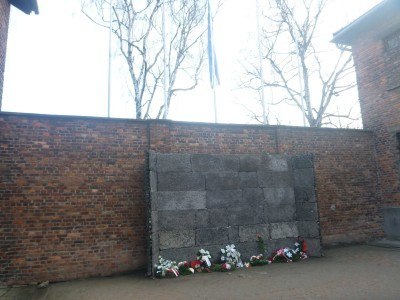
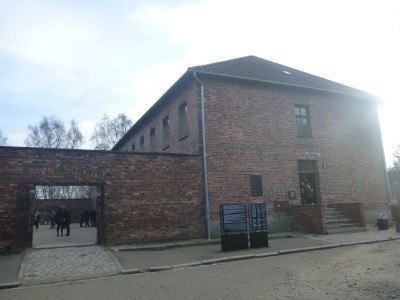
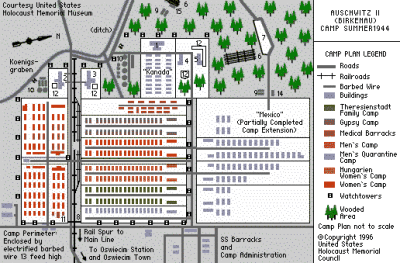
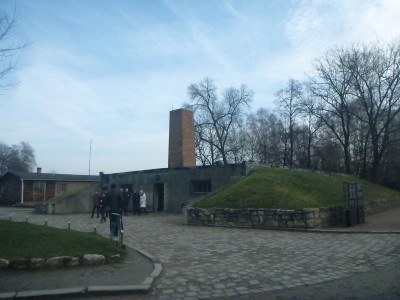
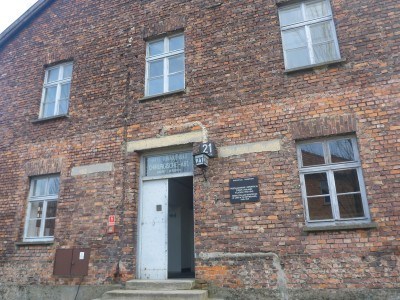
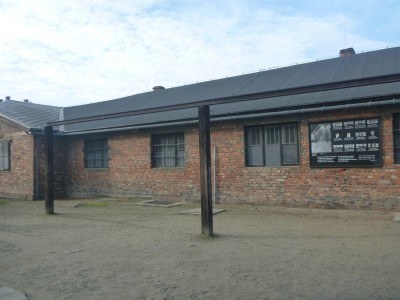
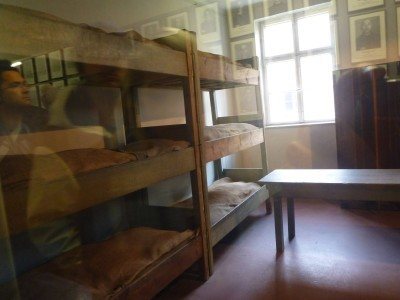
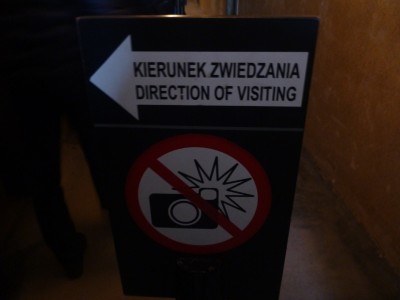
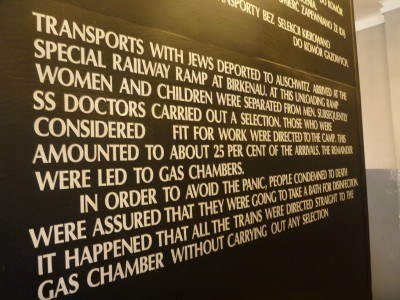
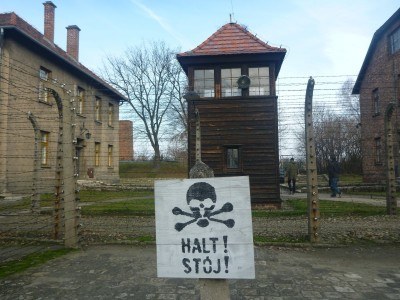
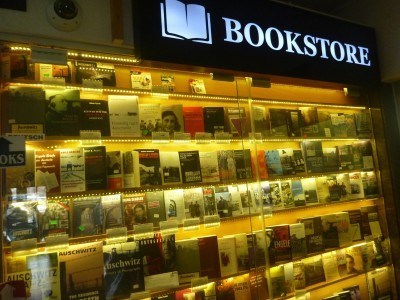
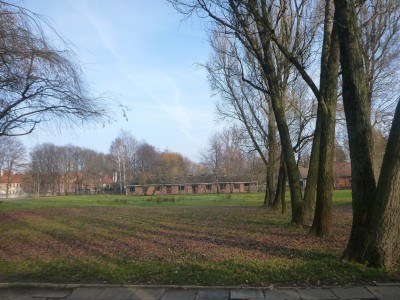
9 thoughts on “Day Tour of German Concentration Camps with Mosquito Hostel in Krakow, Poland: Part 1 – Touring Auschwitz I”